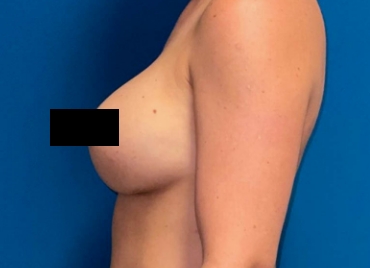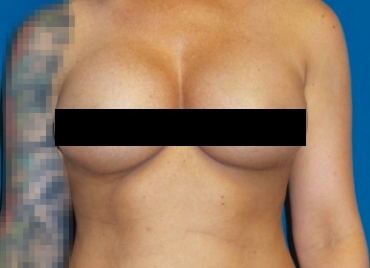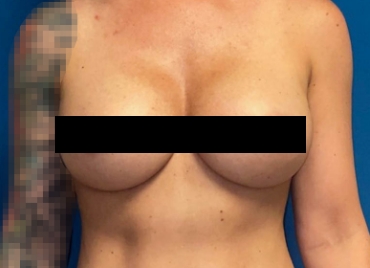Every year I see hundreds of women who are interested in having a breast implant revision. Changes to the breasts over time are experienced by most women because of the natural loss of elasticity during the aging process, genetic predisposition, and weight changes. Women can experience “ptosis” or breast drooping for other reasons as well, such as breastfeeding or weight loss. During breast implant revision consultations with my patients, I find that many of them want to know more about the possibility of a breast implant rupture, and how they will know if a rupture occurs. Though implant ruptures are rare in the short term, they are not lifetime devices and ruptures can and do occur and I want my patients to be educated on this topic. In this blog, I’m providing a list of the 4 of the most common signs of a ruptured breast implant.
Reduction of Breast Size (Saline Implant Rupture)
If you have saline breast implants and experience a rupture, you will immediately be aware of it. The saline will leak from the outer silicone elastomer shell of your implant. When a rupture occurs your breast(s) will immediately deflate, usually within a day or two, and breast size will noticeably change. The saline solution will be absorbed by your body and it does not pose a threat to your overall health.
Change in Breast Shape (Silicone Implant Rupture)
On the other hand, if you have silicone breast implants and experience a rupture, the size of your breasts will not change. This is because the silicone substance inside this type of implant is a thicker gel substance. You may, however, notice a slight change in the shape of your breasts but some women notice nothing at all. This is why silicone implant ruptures are called “silent ruptures.” Over time, a silicone rupture may spur an inflammatory response and your body may develop extra scar tissue around the implant which can contract and cause your breast to feel firm. This is why I recommend that my La Jolla silicone breast augmentation patients receive an MRI every several years to be sure they do not have a breast implant rupture. An MRI is the only way to definitively confirm silicone implant ruptures and a surgeon generally cannot confirm one by an in-person exam alone.
Breast Pain and Tenderness
Regardless of the type of breast implants you have, a rupture will likely cause some tenderness and possibly some pain in your breast. For patients with a saline rupture pain may occur as a result of the loss of shape and the resulting sagging of the breast skin. I advise patients with saline implant ruptures to avoid aspirin and ibuprofen for discomfort as they are blood thinners and will push the scheduling of replacing your implants out for two to three weeks.
Lumps or Ripples in Your Breast
Ruptured saline implants may cause small lumps or ripples in the affected breast. Those ripples are actually the implant itself, deflated and sometimes folded over on itself.
For women who experience a silicone breast implant rupture, ripples and lumps may become noticeable in and around the breast itself or in the armpit area. But remember, because silicone implant ruptures occur slowly, these lumps and bumps may not be immediately noticeable.
Before & After Gallery
*Hover over each image
If You Think You Have Experienced A Breast Implant Rupture, Call My Office Today
At Brucker Plastic Surgery, we care about the overall well-being of each of our patients. If you have had a breast augmentation and think you may be experiencing a breast implant rupture, contact my office and make an appointment to see me. You can reach us in the La Jolla area at (858) 450-1776.













